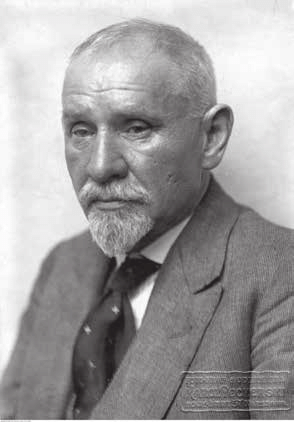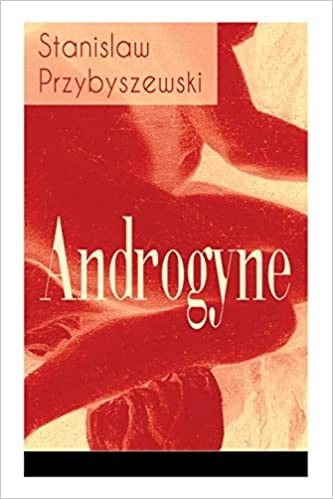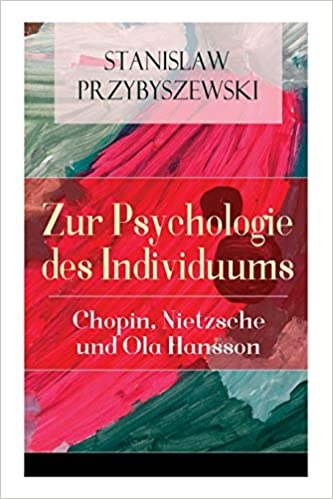vendredi, 13 mars 2020
Stanisław Przybyszewski

Stanisław Przybyszewski
Halina Floryńska-Lalewicz
Writer, poet, dramatist and essayist. Born on 7 May 1868 in Łojewo near Kruszwica, died 23 November 1927 in Jaronty– Inowrocław county.
Upon graduation from a German gymnasium in Toruń (Thorn), Przybyszewski went to Berlin to study architecture and medicine from 1889. In 1892 he edited "Gazeta Robotnicza", the Polish socialist weekly appearing in Berlin. The following year he married the Norwegian writer Dagny Juel and in 1894-98 lived mostly in Norway. While in Germany and Norway, he stayed in close touch with the circles of international Bohemia; he was friends with Edvard Munch, Richard Dehmel, August Strindberg and others.
In 1898 he arrived in Kraków and was appointed editor of "Życie". The following year the magazine went bust for censorhip and financial reasons. In 1901-05 Przybyszewski lived in Warsaw, devoting himself to literary work.
From 1906 to 1918 he stayed in Munich. In 1917-18 he contributed to the Expressionist magazine "Zdrój" which was published in Poznan.
In 1919 he returned to Poland to take civil service posts in Poznan and Gdansk. He also got involved in social responsibility projects - he was the champion and organizer of the construction of a Polish gymnasium and the Polish House in Gdansk. In 1924 he got employed at the Civil Office of the President of the Republic. He was awarded the Officer Cross and the Commander Cross of the Polonia Restituta Order. An active man of letters till his last days, he was the author of a great many publications and gave tremendously popular public lectures.
Przybyszewski's role in the Young Poland period goes beyond the facts contained in his curriculum vitae and, indeed, beyond what he wrote. In the late 19th and early 20th centuries he was a major figure, if not a prophet, of literary life. Writers of more intellectually mature works used to start their discourse from comments on his views. A large percentage of his generation spoke his language. One of the reasons for it was his eccentric personality and his scandalizing legend which included erotic excesses, drinking and the notorious divorce of Jadwiga and Jan Kasprowicz which he had caused. More than that, he was the one to formulate the main philosophical ideas of his generation in a most extreme and dramatic way, and did it through literary provocation.
 He earned fame in Berlin, where he became a hero of the international artistic community. It was in Berlin that he published his resonant essay "Zur Psychologie des Individuums. I - Chopin und Nietzsche. II - Ola Hansson" 1892 as well as poems Totenmesse, 1895 (Polish version: Requiem aeternam, 1904), Vigilien, 1895 (Polish version: Z cyklu wigilii, 1899), De profundis, 1895 (Polish version 1900), Androgyne, 1900. They introduced themes which would be central to all of his work: individualism, the metaphysical and social status of creative individuals, fate of geniuses, the sense of such attributes of genius as "degeneration" and "illness". He continued to present his philosophical views in essays published in a number of magazines and later collected in the volumes "Auf den Wegen der Seele" 1897 ("Na drogach duszy" [On the Paths of the Soul], 1900), "Szlakiem duszy polskiej" [On the Paths of the Polish Soul], 1917, "Ekspresjonizm, Słowacki i Genesis z ducha" [Expressionism, Slowacki and Genesis from the Spirit], 1918.
He earned fame in Berlin, where he became a hero of the international artistic community. It was in Berlin that he published his resonant essay "Zur Psychologie des Individuums. I - Chopin und Nietzsche. II - Ola Hansson" 1892 as well as poems Totenmesse, 1895 (Polish version: Requiem aeternam, 1904), Vigilien, 1895 (Polish version: Z cyklu wigilii, 1899), De profundis, 1895 (Polish version 1900), Androgyne, 1900. They introduced themes which would be central to all of his work: individualism, the metaphysical and social status of creative individuals, fate of geniuses, the sense of such attributes of genius as "degeneration" and "illness". He continued to present his philosophical views in essays published in a number of magazines and later collected in the volumes "Auf den Wegen der Seele" 1897 ("Na drogach duszy" [On the Paths of the Soul], 1900), "Szlakiem duszy polskiej" [On the Paths of the Polish Soul], 1917, "Ekspresjonizm, Słowacki i Genesis z ducha" [Expressionism, Slowacki and Genesis from the Spirit], 1918.
Initially open to various views, Krakow's "Życie", coming out in 1897-1900, was transformed into a magazine of the young generation when Artur Górski was appointed editor-in-chief in early 1898, to become the organ of Young Poland. In no. 1 of 1899 Przybyszewski published Confiteor, the manifesto of the new art and one of its key writings. Its main slogan, "art for art's sake", was not just an appeal for the autonomy of artistic activities. It was born out of Przybyszewski's conviction, shared with other artists, that art reveals important truths about existence, reaching the Absolute. The artist's "naked soul", stripped of conventions and freed from social constraints and intellectual stereotypes, is able to transcend the seeming biological and spiritual dualism of the human being. Indeed, this dualism is one of cognitive powers, and conceals the basic unity of being. According to Przybyszewski, the opposition of soul and brain is the opposition of intuitive and discursive cognition; the former, analytical and communicable, belongs to the unified order of social phenomena; the latter is a way in which the individual communicates with absolute reality.
Przybyszewski's manifesto, affirmative of creative individuals as bearers of metaphysical insight, was targeted against the positivist program of socially involved art and the positivist concept of progressive natural and social evolution. It juxtaposed two types of cognition, two moral models and two development ideas: the social one and the individual one. Przybyszewski invoked the anti-positivist trends of contemporary philosophy, represented by Friedrich Nietzsche, Arthur Schopenhauer, Eduard Hartmann, as well as Polish romantic tradition (mainly Słowacki's philosophy of Genesis), theosophy and occultism. His views were also influenced by the heritage of naturalism. The sphere of the Absolute, in which the "naked soul", freed from social constraints, belongs, initially had strongly marked features of the sphere of biology and drive, believed to determine the conscious life of man and to cause permanent moral conflict. Przybyszewski based on it his concepts of "blameless guilt", doom and evil, the latter perceived as the inseparable element of being. Gradually, however, the "naked soul" evolved to become increasingly spiritual, its destructive and self-destructive energy proving the evolution's driving force towards individual perfection. Przybyszewski combined Slowacki's concept of King Spirit who destroys the existing forms of being to create finer ones, with Nietzsche's idea of the Overman. To legitimize these ideas, he finally accepted the concept of re-incarnation. Przybyszewski translated the philosophical issues raised in his essays and narrative poems into the language of literary prose and drama. A very prolific writer, he published many novels, all of them trilogies, in German and Polish, notably Homo Sapiens, German edition 1895-96, Polish edition. 1901; Satans Kinder, 1897; Synowie ziemi [Sons of the Earth], 1904-11; Dzieci nędzy [Children of Poverty], 1913-14; Krzyk [The Cry], 1917; Il Regno Doloroso, 1924. All of his novels had basically the same type of protagonists, i.e. outstanding individuals destroyed by the social world and by their internal demons. These doomed characters were presented in extreme, frequently pathological, emotional states of alcoholism, jealousy, destructive love. The plots were weak and served as a pretext to analyze the characters' internal states. This new type of the protagonist required appropriate narration techniques that were different from those used in realistic novels. Przybyszewski made innovative use of (seemingly) indirect speech and of internal monologue.
Przybyszewski translated the philosophical issues raised in his essays and narrative poems into the language of literary prose and drama. A very prolific writer, he published many novels, all of them trilogies, in German and Polish, notably Homo Sapiens, German edition 1895-96, Polish edition. 1901; Satans Kinder, 1897; Synowie ziemi [Sons of the Earth], 1904-11; Dzieci nędzy [Children of Poverty], 1913-14; Krzyk [The Cry], 1917; Il Regno Doloroso, 1924. All of his novels had basically the same type of protagonists, i.e. outstanding individuals destroyed by the social world and by their internal demons. These doomed characters were presented in extreme, frequently pathological, emotional states of alcoholism, jealousy, destructive love. The plots were weak and served as a pretext to analyze the characters' internal states. This new type of the protagonist required appropriate narration techniques that were different from those used in realistic novels. Przybyszewski made innovative use of (seemingly) indirect speech and of internal monologue.
As they violated taboos of social behaviour and were - intentionally - morally provocative, all of his books aroused intense public response. Translated into English, Italian, Czech, Bulgarian, Serbo-Croatian, Yiddish and many other languages, his novels and essays had a major influence on the period's literature, particularly in Scandinavia and Central Europe.
He also wrote a number of dramas, including Das grosse Gluck, 1897; Złote Runo [Golden Fleece], 1901; Śnieg [The Snow], 1903; Matka [Mother], 1903; Odwieczna Baśń [Perennial Fairytale], 1906; Śluby [The Oaths], 1906; Gody życia [The Nuptials of Life], 1910; Topiel [Deep Water], 1912; Miasto [The Town], 1914; Mściciel [The Avenger], 1927. Their themes and characters were similar to those of the novels. Likewise, the plots were flimsy, and were compensated for by numerous monologues and discussions revealing the inner life of the characters.
Przybyszewski's dramas were put on stage in many Polish and European theatres; in a number of cases the staging preceded the coming out in print. In 1921, marking Przybyszewski's thirtieth anniversary as a writer, his dramas appeared in the repertoires of the theatres of Krakow, Warsaw and Lvov. All the premieres were accompanied by heated debates on their literary and moral aspects.
Both the work and the legend of Przybyszewski lost some of its popularity in the twenty years separating the two world wars, other literary events eclipsing them. Przybyszewski's other side came to the forefront, however. This enemy of involvement of art and of any social ties gave himself in to the tide of patriotic feeling, publishing a bilingual pamphlet "Polen und der heilige Krieg; Polska and the Holy War" (1916), an apotheosis of the struggle for national liberation. After World War I his support for the freshly regained statehood was not limited to words; he championed and master-minded pro-Polish public actions and became a valued civil servant. Once a poet maudit, he had a funeral worthy of a dignitary, writes his biographer, Stanisław Helsztyński. Przybyszewski was buried in Góra in the Kujawy region. His coffin was placed in a four-horse carriage decorated with state insignia. The funeral procession was a three-quarter mile long and included state and Church dignitaries, chancellors of colleges and universities, writers and journalists. An honorary salute was fired over his grave. A public collection of money which lasted for four years paid for the stately tomb that has survived to the present day.
Przybyszewski played a major role in Polish cultural life as an artist, thinker and taboo-breaking provocateur. Writing in Polish as well as German, he was among the best-known Polish writers in Europe. Today he is of interest mostly to historians of literature and culture as well as to lovers of the period of Young Poland. Of the few stagings of his dramas, the most interesting performance was that of Matka directed by Krystian Lupa in Jelenia Góra in 1979.
Major publications: "Wybór pism" [Selected Writings], Wroclaw 1966; "Listy" [Letters] vol. 1-2, Wroclaw 1954.
Author: Halina Floryńska-Lalewicz, January 2004
00:38 Publié dans Biographie, Histoire, Littérature | Lien permanent | Commentaires (0) | Tags : histoire, pologne, jeune pologne, littérature, littérature polonaise, lettres, lettres polonaises |  |
|  del.icio.us |
del.icio.us |  |
|  Digg |
Digg | ![]() Facebook
Facebook



Les commentaires sont fermés.